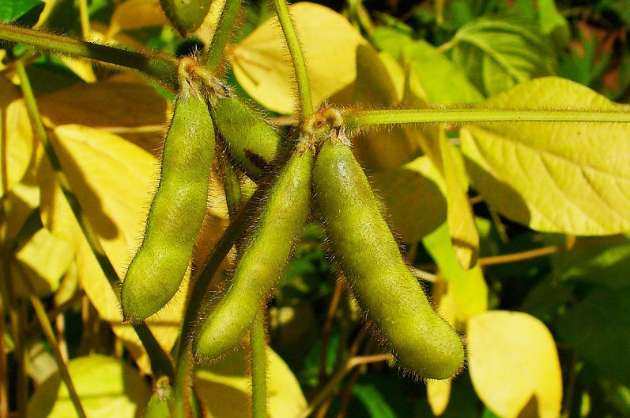New Delhi, Attacks by plant diseases and pests have affected the yield of soybean in Madhya Pradesh, the largest grower in the country, with overall losses at present pegged around 10-12 per cent.
The most-affected districts are Indore, Dewas, Ujjain, Dhar, Sehore, Harda, Shajapur, Mandsaur, and Neemuch, as per a survey conducted by the Soybean Processors Association of India or SOPA.
Concerned over the reports of damage to soybean crop in Madhya Pradesh, SOPA undertook a quick field survey in the maximum-affected areas, said the industry body.
"Apart from most-affected districts, some crop damage was recorded at other places too," said DN Pathak, Executive Director, SOPA.
The early sown crop has been affected the most, with the maximum damage seen in the JS-9560, JS-2029, and JS-9305 varieties and some non-notified local varieties, he added.
Sudden very heavy rains and variation in temperature created a conducive environment for large-scale attack by dormant rhizoctonia aerial blight, and anthracnose (pod blight), which infected the soybean plants.
Apart from this, stem fly has also damaged the crop, though there has been no widespread attack of the yellow mosaic virus except in some areas, said the survey.
The yellowing of the crop is due to a combined effect of stem fly, RAB, anthracnose, and not by the virus.
Farmers have been advised to take appropriate crop protection measures to minimise the yield losses.
"We have also taken feedback from the Maharashtra and Rajasthan growers but the effect there is negligible, as of now," said Pathak.
In Madhya Pradesh, the overall loss of production may be 10-12 per cent, though the weather conditions in the coming weeks will have a great bearing on the final yield, he added.
As per the latest data of sowing coverage released by the Ministry of Agriculture and Farmers' Welfare last week, the area under soybean cultivation in the country has reached 120 lakh hectares, 6.69 per cent higher than 112.47 lakh hectares recorded in the corresponding period last year.
(IANS)




























